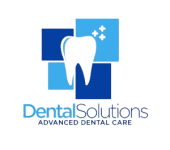Scaling and Curettage

What Does Scaling & Curettage Mean?
Scaling and curettage are two dental hygiene procedures that are sometimes done at the same time. During scaling, a special tool called a scaler is used to remove plaque and tartar from the teeth and gums. A dental scaler is a tool that dentists and dental hygienists use to scrape plaque and tartar off of teeth and from below the gum line.
Curettage, on the other hand, is used to remove unhealthy tissue from the gum pockets around the teeth. A small tool called a curette is often used to remove infected tissue. Curettage is done to get rid of the bacteria and toxins that cause gum disease and to help healthy tissue grow in their place.
Scaling and curettage are important parts of regular dental cleanings.
Taking care of your teeth is an important part of taking care of your overall health. Tooth loss, cavities, and other dental problems can be avoided by taking care of your teeth. Part of keeping a healthy mouth is getting regular cleanings that include scaling and curettage. This post will talk about how scaling and root planning can help your oral health. We are the best in this area and we have the reasonable rates. You can visit to our clinic for the best service and we used the sterilize equipment.
The process of figuring out how to plan & grow roots
Scaling and root planning are procedures that can be used to treat periodontal disease without hurting the gums or teeth (SRP). Bacteria cause periodontal disease, which hurts the gums and bone that hold teeth in place. When tartar and plaque build-up on teeth, it can cause infections and sores.
During SRP, a dental hygienist or dentist uses special tools to clean plaque and tartar from the surface of the tooth and the root canals. Root surfaces will also be made smoother, making it harder for bacteria to stick and cause inflammation.
Most of the time, SRP takes between two and four sessions to finish, but this can depend on how bad the problem is. A local anesthetic might be used to keep you comfortable during the procedure. After scaling and root planning (SRP), your dentist or hygienist may suggest more treatments to help control the problem, such as antibiotic treatment or more frequent cleanings.
Curettage:
Curettage is the process of taking sick tissue out of the gum pocket. Pockets between the gums and the teeth are called gum pockets. The infection in these pockets could cause gum disease and lead to the loss of teeth in the long run.
The dentist or hygienist will use a curette to remove the diseased tissue during this procedure. So that the roots don’t get infected again, they will be sanded down. Local anaesthetic can make sure that you are comfortable during the procedure.
Your dentist or hygienist may tell you to take antibiotics or get your teeth cleaned more often after the surgery to keep your oral health in good shape.
Keep in mind that curettage isn’t always the best choice. Your dentist will look at your situation and give you options for how to treat it.
In the end, scaling, root planing, and curettage can be used to treat periodontal disease and keep your mouth healthy. If you have gum disease symptoms like bleeding gums, bad breath, or loose teeth, you should see your dentist or hygienist as soon as possible to talk about your treatment options.
Two parts of dental cleanings, scaling and curettage, should be done regularly to keep teeth and gums healthy. Here are a few possible reasons why:
Keeps gum disease away
Gum disease is a common dental problem that, if not taken care of, can cause serious health problems. By removing the toxins and bacteria that lead to gum disease, scaling and curettage, which are part of regular dental cleanings, can help prevent gum disease. If you take care of your gums, you are less likely to get systemic diseases like diabetes, heart disease, and stroke.
Soaks up and gets rid of stains
Plaque and tartar can be cleaned off your teeth during regular dental cleanings. This can make your teeth whiter and brighter. If you smoke or drink a lot of coffee, tea, or other drinks that stain, be very careful. Even if brushing and flossing have failed to remove a stain, a dentist can use scale and curettage to completely remove it.
Stops more teeth from falling out.
If you don’t take care of your gums, gum disease can spread and lead to tooth loss. By getting rid of the bacteria and toxins that cause gum disease, scaling and curettage can keep teeth from falling out. By taking care of your gums, you can save your teeth and save money on expensive procedures like dental implants and bridges.
Improves health in general
Scaling and curettage are common dental hygiene procedures that have been linked to a lower risk of heart disease, stroke, and diabetes. If you take care of your teeth and gums, you may improve your overall health and quality of life.
How often should my scales be taken off and my curettage done?
How often you need scaling and curettage performed will depend on your individual oral health requirements. Some people might need it once every six months, but others might need it more often. Your dentist or dental hygienist can advise you on how often you should undergo scaling and curettage based on your unique oral health needs and circumstances.
Reaching a Final Analysis of Curettage and Scaling
Dental cleanings that include scaling and curettage on a regular basis are crucial for sustaining healthy teeth and gums. Getting rid of plaque and tartar from the teeth and gums can help keep gum disease, tooth loss, and other dental problems from happening. If you haven’t had your teeth cleaned in a while, you should make an appointment. gums and teeth. If you want to avail the best services regarding dental so contact right away.
Instructions after scaling and Curettage
- Start brushing, flossing, and continue your prescribed oral hygiene regime immediately.
- You may have to GO EASY at first, but make every effort to keep your mouth plaque free. We recommend rinsing your mouth several times on the day of treatment, with warm salt water (use 1/4 tsp salt to 8 oz. water).
- Sensitivity to cold or touch may temporarily occur. Removing all plaque from the tooth surfaces and bruising with a fluoride tooth paste or fluoride that we may prescribe will usually reduce or eliminate sensitivity in a day or two.
- Slight bleeding may continue for several hours following the procedure. This is not unusual and should stop. If bleeding persists beyond a few hours, please call our office.
- Your next meal should be soft. Avoid any hot, spicy, and hard gritty foods such as peanuts, popcorn, chips, for at least 3-4 days.
Please refrain from smoking for 24 hours or longer after scaling
Avoid any aerobic activity for the rest of the day; e.g., jogging, tennis, racket ball, anything strenuous. Take it easy.



